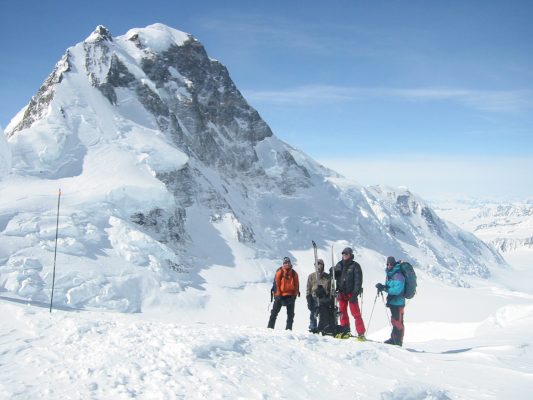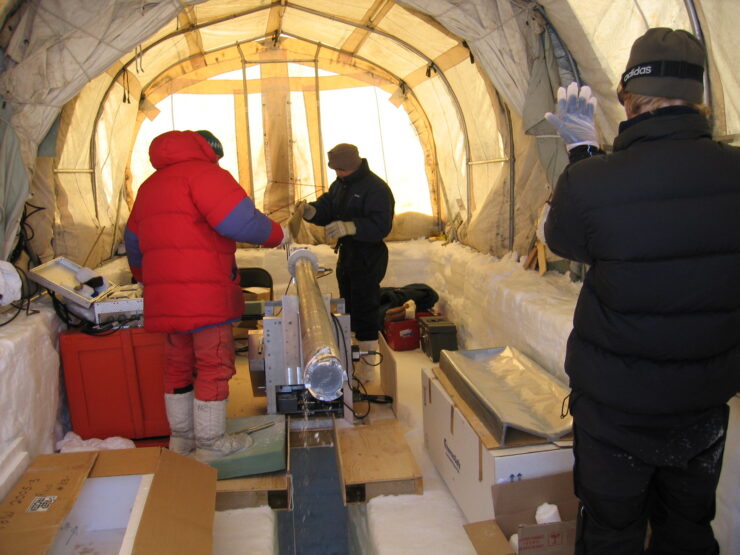U of O professor played role in defining new ages, shows oldest evidence of climate influencing human civilization
It’s official—we’re living in a new age. Or, at least, we have a new name for it.
In July 2018, the International Commission on Stratigraphy (ISC) officially declared that the Holocene Epoch—which started at the end of the last Ice Age, about 11,700 years ago—will now be subdivided into three ages, the Greenlandian, Northgrippian, and our current age, the Meghalayan.
University of Ottawa adjunct professor David Fisher was one of the many geologists involved in the search to find precise dates for these new ages. He spent time in Mt. Logan, Yukon working on ice core samples in hopes they would provide evidence of climatic change that would indicate a new age.
The Meghalayan age, named after the Indian province of Meghalaya, where the evidence that serves as the official time stamp was found, began 4200 years BP (before 1950) during a time of global aridification that appears in ice cores and sediment deposits, Fisher explained. This global drying is often called the “4.2 kiloyear event.”
“All this subdividing business requires that there’s some physical or geological horizon that can be found in the stratigraphic record, in cores or in layered deposits, something that has to be found,” said Fisher. “There was a large dip in the ratio of Oxygen-18 over Oxygen-16 … that indicated that something rather large had happened in the moisture flux of the planet 4200 years ago.”
Dr. Fisher served on a working group in the 2000s in Mt. Logan studying the isotope levels in ice cores, in the hope of finding what geologists call a Global Boundary Stratotype Section and Point. The sample taken from Mt. Logan, in Canada, would have been the primary record, but it was retained to secondary record status since most of it had been eroded from drilling and melting.

“You need one geological record and one backup record, and you have to defend that and point out how it’s got lots of corroborating records from various places in the world,” said Fisher. “The secondary record was from an ice core in Mt. Logan in the Yukon … that’s how I got into the whole thing, because I was the lead in drilling the Mt. Logan record.”
What makes the Meghalayan especially interesting, said Fisher, is that its start date coincides with the collapse of several prominent Bronze Age civilizations and a restructuring of the ancient world. It is the only age in which scientists can see the impact of global climate change on civilization, as a drying world put pressure on early farming societies.
“The 4200-year event caught stationary civilization that relied on agriculture, and they couldn’t get up and move, so it had major repercussions,” Fisher said.
“It certainly coincides with the end of the Old Kingdom in Egypt, and at the same time the Akkadian civilization in the Middle East. And there were problems in India and China,” said Fisher. “The bad times lasted a couple of centuries.”
It’s important to have a solid start and end date for a given age, so that scientists working in that period are all on the same page when doing research.
“It’s just usual business in science—if you use a term, there must be a standard definition of it somewhere,” said Fisher.
Pinning down the start of the Meghalayan age has further significance, since it is the first example of geologists being able to coincide a geological change with human change. This might help bolster the push for declaring a new epoch, the Anthropocene, or “Age of Human Influence,” an epoch that would signal the first instance of humans having influence over their climate, and not the other way around.
“Introducing the Meghalayan, it’s a helpful thing for them, because we’ve shown a change in the natural world impacting the human world, and now the next logical thing is to show how a change in human activity is impacting the natural world.”





